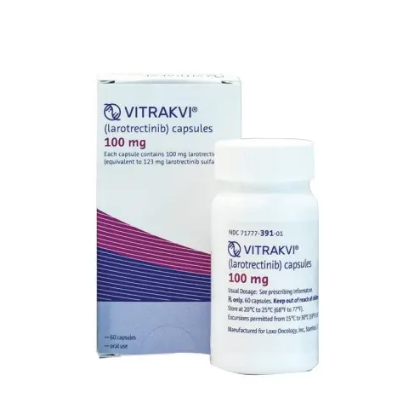Larotrectinib 拉罗替尼(Vitrakvi)常见副作用是那些?

据印度代购了解,拉罗替尼(Larotrectinib)是治疗甲状腺癌的靶向药吗? 第一代针对甲状腺癌的靶向药是2000年后开始研发的,在2010-2015期间被批准在美国上市,包括:用于治疗乳头状癌/滤泡状癌/嗜酸细胞癌的索拉非尼和乐伐替尼;用于治疗髓样癌的凡德他尼和卡博替尼。第一代靶向药填补了之前无药可用的空白,除索拉非尼之外的三款药有效率也都说得过去,但它们针对的是一些普遍存在的靶点,也就是所有需要靶向的病人都可以用。
According to daigou India, is Larotrectinib a targeted drug for thyroid cancer? The first generation of targeted drugs for thyroid cancer, developed since 2000 and approved in the United States between 2010 and 2015, include: sorafenib and levaritinib for papillary/follicular/eosinophilic carcinoma; Vandtanil and carbotinib for medullary cancer. The first generation of targeted drugs filled a void where none had been available before, and the three drugs except sorafenib were all reasonably effective, but they targeted some common targets, meaning they could be used by all patients who needed them.
据印度代购了解,这也带来一个问题:药物副作用比较大,60-80%服药的患者身上出现了明显的副作用,10-20%服药的患者因为副作用不得不终止服药。因为第一代靶向药巨大的副作用,所以2010年后开始了第二代靶向药的研发。2018年第一款二代靶向药拉罗替尼(Loxo-101)已经在美国上市。和第一代靶向药针对性不强不同,第二代靶向药选择的依据是肿瘤不同的基因突变。比如针对BRAF基因突变的患者,使用的是达拉菲尼&曲美替尼组合;针对NTRK基因融合的患者,使用的是拉罗替尼。相比一代靶向药,二代靶向药的客观缓解率有了明显提升,更重要的是显着副作用比例明显下降。
印度代购提示您,本品拉罗替尼都有哪些副作用呢?印度代购提示您,本品拉罗替尼的副作用应该怎么处理呢?
据印度代购了解,在临床试验中接受拉罗替尼治疗的患者报告的常见副作用包括疲劳,疲劳,恶心,咳嗽,便秘,腹泻,头晕,呕吐以及肝脏中AST和ALT酶血液水平升高。大多数患者(93%)发生1级或2级不良反应(AE)。没有治疗相关4级AE,最常见的治疗相关3级AE包括:ALT或AST上升(5%),贫血(2%),中性粒细胞计数减少(2%),恶心(2%)和头晕(2%)。但是患者朋友可以放心,这些副作用的程度完全在可以接受的范围之内,及时出现较为严重的副作用,咨询医生后进行必要的剂量调整即可恢复。一般来说,只需要根据不同的副作用进行应对即可。
据印度代购了解,需要注意的是,NTRK即神经营养受体酪氨酸激酶,是一种比较罕见的基因,能够与实体肿瘤的泛癌种靶向药拉罗替尼进行融合,从而达到治疗目的,前提条件必须是肿瘤患者本身携带NTRK基因。虽然不用太考虑肿瘤的类型或生长区域,但肿瘤细胞需要NTRK基因融合产生的突变。因为只有存在这样的突变,拉罗替尼才能准确地找到肿瘤细胞,发挥治疗作用。如果肿瘤细胞没有这种突变,药物就无效了。只有在NTRK基因突变的患者中,拉罗替尼的应答率才达到75%;而NTRK基因突变只占大多数实体肿瘤患者的1%,在这1%中的缓解率约为75%。
It should be noted that NTRK, or neurotrophic receptor tyrosine kinase, is a relatively rare gene that can be fused with larlotinib, a kind of tumor targeting drug for solid tumors, so as to achieve the purpose of treatment, the prerequisite is that the tumor patients themselves carry the NTRK gene. Although the type of tumor or region of growth is not much to be considered, tumor cells need mutations resulting from fusion of the NTRK gene. Because only in the presence of such mutations can larotinib precisely locate the tumor cells for its therapeutic effect. If the tumor cells do not have the mutation, the drug is ineffective. Only in patients with mutations in the NTRK gene did larotinib have a 75 percent response rate; Mutations in the NTRK gene account for only 1 percent of most solid tumors, and the response rate in that 1 percent is about 75 percent.





 咨询客服
咨询客服